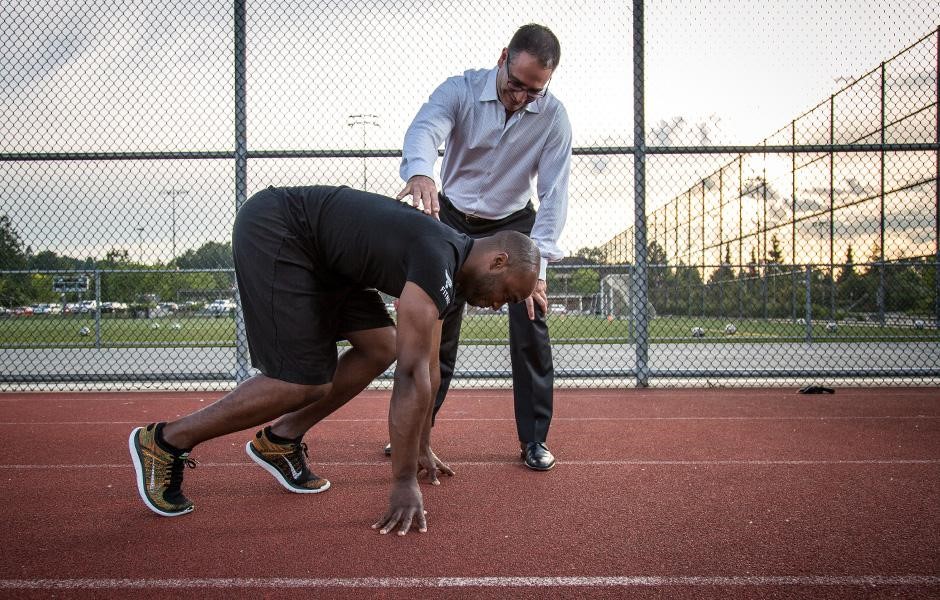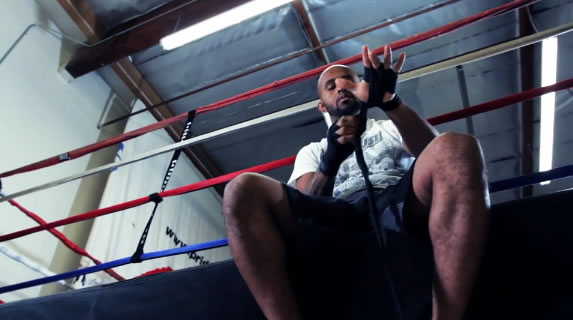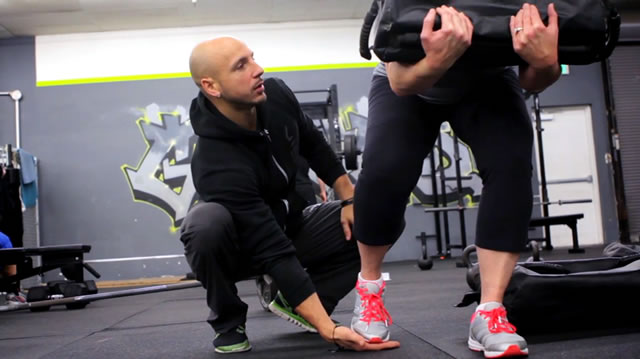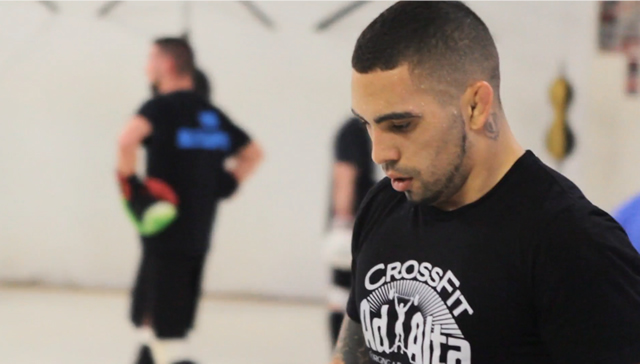My Top 8 Resources for Coaches
Tools to help you become a go-to expert and get your clients the results they deserve.
By Joel Jamieson

When I was first getting into the fitness industry 20 years ago, if someone would have told me that I’d eventually become known as an expert in conditioning and build an online business, I’d have thought they were crazy. Don’t get me wrong—I knew plenty about strength—but I knew next to nothing about conditioning. To be honest, I didn’t even own a computer or know that mixed martial arts was a real sport.
My career has had a lot of unexpected twists and turns, but I’ve been able to build a successful business doing something I’m passionate about and truly enjoy while helping thousands of people get better results and improve their fitness along the way.
As the new year gets underway, I’ve spent some time reflecting on the path that led me here. What I want to share with you is the single most important lesson I’ve learned along the way.
The truth is that if you want to be successful in fitness; whether that means helping more people, working with the best teams, making more money, or just getting better results for yourself— there is just one thing that really matters.
Do this one thing, and everything will eventually come together. Don’t do it, and you’ll never achieve the success that you’re truly capable of.
The one thing you have to do for fitness success (Hint: It’s not bench pressing “x” amount of pounds or making your clients sweat)
If you want to rise to the top of your profession and get your clients the life-changing results they want and deserve, you have to be a coach, not a trainer.
When I first opened my gym back in 2003, I was a trainer. I knew how to get people strong and to be honest, I thought that’s all I really needed to do. When people came to my gym, regardless of what their goals or abilities were, I saw it as my job to make them stronger.
In 2004, everything I thought I knew about being a good trainer changed when a fighter named Ivan Salaverry walked into my gym and asked me if I could train him for a K-1 fight. At the time, I didn’t even know that K-1 was kickboxing, but of course I agreed to train him anyway.
I figured why not, all I had to do was make him stronger. I knew how to do that—or at least I thought I did.
When being strong isn’t enough (Or, how getting humbled taught me a lot about what I didn’t know)

I quickly found how just how wrong I was when I decided to try combat sports myself. Face down on the mat, gassed out after just 30 seconds, I quickly realized why they call it strength AND conditioning.
I was strong—much stronger than most of the fighters—but without conditioning, my strength wasn’t worth much.
In that moment, I realized that I had a choice to make: I could keep being a trainer and stick to what I knew, making people stronger; or, I could start my journey as a coach and accept that I had no idea what I was doing on the conditioning side—and start doing something about it.
You see, what I’ve found in fitness over the years is that there are generally two kinds of people, coaches, and trainers…
Trainers can take you through a workout and make you sweat. They don’t really write training programs that help you progress long term, but they are always throwing in new exercises and no two workouts they do are ever the same.
They will tell you about their own style of training and why you should be following it too. They are often energetic and enthusiastic in the gym, but they’d rather spend time following fitness celebrities on Instagram than reading research papers on the autonomic nervous system and learning about stress.
And while this may be an effective way to entertain clients in the short term, it’s not enough to be the best, most effective coach you can be and get your clients the long-term results they want and deserve.
The coaching mindset: Get your clients the results they really deserve and become the go-to professional in your location or niche

Coaches, on the other hand, spend time assessing each person as an individual and are always looking for more effective methods, rather than just new exercises. They’re willing to spend hundreds, even thousands of dollars to fly across the country to learn from anyone they think they can help make them a better coach.
Coaches recognize how amazingly complicated the human body is and that studying it is a never-ending journey. Trainers pick up fitness magazines to look for new workouts to try.
Trainers stick with what they know. Coaches will always tell you how much more they have to learn.
The biggest difference is that trainers see their jobs as taking people through a hard workout. Coaches know the real key to success is figuring out how all the pieces of the fitness puzzle fit together so they can deliver better results to everyone they work with.
There are far more trainers than coaches in the fitness industry, but which one you choose to be is completely up to you. Even if fitness isn’t your profession, you still have to train yourself and choose the path you’re going to take: trainer, or coach?
The 8 keys to coaching success in fitness
Over the years, I’ve invested more time and money studying the art and science of fitness than I could ever count. Along the way, I’ve come to realize that there are essentially 8 areas of fitness that every coach needs to become proficient in to be successful.
While you don’t have to become a renowned expert in each of them, you do have to develop beyond a basic level of knowledge. Most importantly, you have to understand how each piece relates to what people need to be doing inside and outside of the gym to reach their goals.
While there’s no magic shortcut to any of this, I want to help save you time by providing an overview of what these 8 areas are, along with what I think are the most importing things you need to learn in each. I also want to share some of my best, go-to resources; the places where I turn to myself when I need to learn more.
If you’ve made the decision to be a coach and are committed to being successful, whatever that may mean for you, giving you the following blueprint is the best way I know to help you achieve that. It’s the same one I’ve used to become a world-renowned coach and build a million dollar business.
Biology 101: we're hardwired for survival

By far, one of the biggest mistakes I see coaches and trainers make is allowing (sometimes even encouraging) people to use absolutely terrible technique as soon as they start getting tired.
I’m sure you know what I mean. The half push-ups, the swinging pull-ups, the quarter squats and the interval sprints with arms flailing all over the place.
The truth is that a lot of coaches intentionally train their athletes to extreme fatigue on a regular basis. They’ve been taught that the best way to manage fatigue is by forcing someone to suffer through it.
This is often done in the name of building “mental toughness.”
Here’s the real problem with this approach: putting someone through a grueling training session without any emphasis on technique as they get tired only serves to create bad movement patterns and horrendous technique.
What do think happens when an athlete that’s been trained this way goes into competition?
They end up carrying these same poor motor patterns and lapses in technique with them. And because bad technique is less efficient, it burns up more energy and the athlete fatigues faster than ever.
Allowing poor technique or movement quality during times of fatigue — even when it’s “just” practice or training — is a sure-fire way to limit an athlete’s performance and make their conditioning worse rather than better.
It’s often done in the name of building “mental toughness” but all it’s really doing is paving the way for poor technique and performance when it counts the most.
You know what real mental toughness is?
It’s the ability to stay disciplined, focused, and maintain effective technique even as you feel the pain of exhaustion starting to settle in. Blind effort without execution is recipe for failure (not to mention injuries).
This is why we must focus on teaching people how to move well even when they’re fatigued. It’s not enough to have good technique in the first quarter or the first round.
But, this doesn’t happen by accident, it’s a skill that you have to teach and reinforce through your coaching. This is a concept I call Fatigued Motor Control.
Fatigued motor control is built on the understanding that A) our brain learns how to move when we’re tired differently than when we’re fresh and B) we can become better at coping with the negative effects of fatigue through specific training.
What does this training look like?
It starts with the recognition that when fatigue starts to set in, the goal isn’t to let someone swing wildly for the fences, or just yell at them to blindly go harder. No matter how tired someone gets, the goal is always to maintain quality of movement and technique to preserve energy.
More efficient technique = better energy management and thus improved conditioning.
As a coach, it’s your responsibility to help athletes recognize where they start to break down when fatigue sets in. An athlete needs to be aware of their bad habits and their natural reactions to fatigue. This is the only way to help them get rid of them and can be the difference between winning and losing.
As a coach, you need to teach them to recognize when they get tired and have a little voice inside their head reminds them, “Hey, get back in position”, or “Keep your hands up.” If they can develop the instinct to maintain technique and conserve energy as they fatigue, rather than waste it with poor mechanics and blind aggression, they’ll be far ahead of their competition.
The bottom line: to effectively manage fatigue while maintaining a high level of performance, you have to emphasize proper technique and movement when fatigue sets in. Coaching movement and reinforcing good motor patterns shouldn’t stop when someone gets tired.
What to do next
So, where does this leave us?
The three conditioning skills we talked about — dynamic energy control, respiration for recovery, and fatigued motor control — are part of the M3 model of conditioning that I’ve developed over the last 15 years. M3 stands for Movement, Metabolic Systems and Mental Performance.
Each of these pillars of conditioning work together and ultimately determine if someone you’re training is going to be able to use their fitness to their full potential to get the win, or if they’re going to gas out and be left wondering what went wrong.
The standard approach of only focusing on fitness qualities (increasing strength, endurance, mobility, etc.) by itself isn’t enough. This is why your job as a coach or trainer is to do more than develop someone’s “fitness.” It’s to help them put all the conditioning pieces together.
To do that, the best place to get started is by working on the three skills I’ve covered in this article. Give them a try for yourself and I guarantee you’ll see the difference.
Because you’re on my BioForce Certification Insider’s List, I’m also going to be sending you more of my best tips, strategies and training methods. Nothing is worse than watching an athlete you’ve trained fall short of their goals. That’s why I want to do everything I can to make sure you have all the training weapons you need to create world-class conditioning programs that flat-out work for anybody.
Stay tuned and look for more coming soon.
